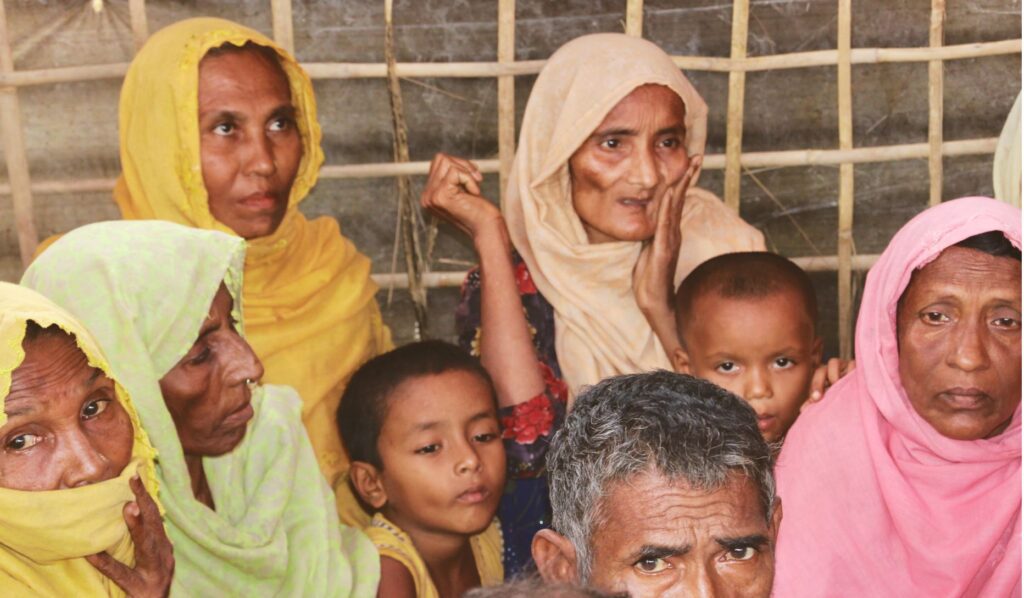As of Wednesday, April 1, there have been 54 cases and 6 deaths in Bangladesh. There is already one confirmed case in Cox’s Bazar, where roughly 855,000 refugees are living in 34 congested camps. Severe overcrowding, poverty, and a chronic lack of health care facilities are fueling concerns that COVID-19 could quickly spread, exacerbating an already dire humanitarian crisis. Currently, no screening and treatment are available in the camps, and access to treatment centers outside of the camps may prove challenging for refugees.
Jahangir Alam, Acting Country Director of HelpAge International in Bangladesh, provides an update on the situation in Cox’s Bazar and the risks of a COVID-19 outbreak.
Given the horrendous consequences of a COVID-19 outbreak in Cox’s Bazar, prevention is absolutely vital, but the challenges are immense. Physical distancing is almost impossible in the Rohingya camp. Even if people self-quarantine, there are between 5-8 family members living in one room. People must move around the camp, as most of them don’t have running water, toilets and bathing facilities in their own homes. Families only receive one bar of soap a month and many have sold theirs to meet other essential needs.
We are specifically worried about older people. Many of them are suffering from hypertension, diabetes, and cardiovascular and chronic respiratory diseases, which are exacerbated by the poor conditions in the camp, so they are dangerously vulnerable.
HelpAge is distributing hand sanitizers and detergent; we plan to reach 21,000 older people. Teams have also established handwashing points at the entrance of all service facilities.

Many people believe that they won’t contract COVID-19 as there are such low numbers at the moment in Cox’s Bazar; others believe that the numbers are much higher than has been stated and are terrified of contracting the virus. Many believe that it’s coming from outsiders, so they are hesitant to welcome NGO workers even if they are providing emergency services.”
HelpAge staff is educating people in the camps about COVID-19 using audio messages in the Rohingya language developed by BBC Media Action, amplified by loudspeakers.
There are a few isolation centers with 200 beds in the Ukhiya camp, but this is for a population of almost one million. I cannot bear to think what will happen if there is an outbreak here. Things will quickly spiral out of control and there will be a colossal loss of life.
Unfortunately, at the moment, if someone becomes acutely ill with COVID-19, it could very likely be a death sentence. There are only three ventilators for all of the camps and there are no treatment centers outside of the camps at this moment. Even if they are available, it is very difficult for Rohingya people to be able to access them.
Unfortunately, there are currently no testing facilities available in the camp, but the government has said that this should be available in the next 2-3 days in a laboratory in Cox’s Bazar. The nearest screening center at the moment is in Chattagram (around 300km / 186 miles away from the Rohingya camp). There are 120 isolation beds available in the nearby sub-districts of Ramu and Chakaria but it is very unlikely that Rohingya people will be able to access this, as the local population is 400,000.
The government and NGOs are all trying their best like everyone across the world but it’s very difficult. It’s mind-boggling when you hear on the news that hospitals in cities like New York are struggling to cope. So how can we be expected to cope here in these conditions? Doctors and nurses are petrified they will contract the virus without vital personal protective equipment. Many older people are suffering from the seasonal flu and they are not getting the treatment they need as health workers suspect it may be COVID-19 and are too scared to treat them.
HelpAge is procuring medical gowns, surgical masks, gloves, goggles, hand sanitizers, and head and shoe covers. We are also preparing teams of volunteers to be able to provide community health care and water and sanitation on a larger scale in the coming weeks and months.


